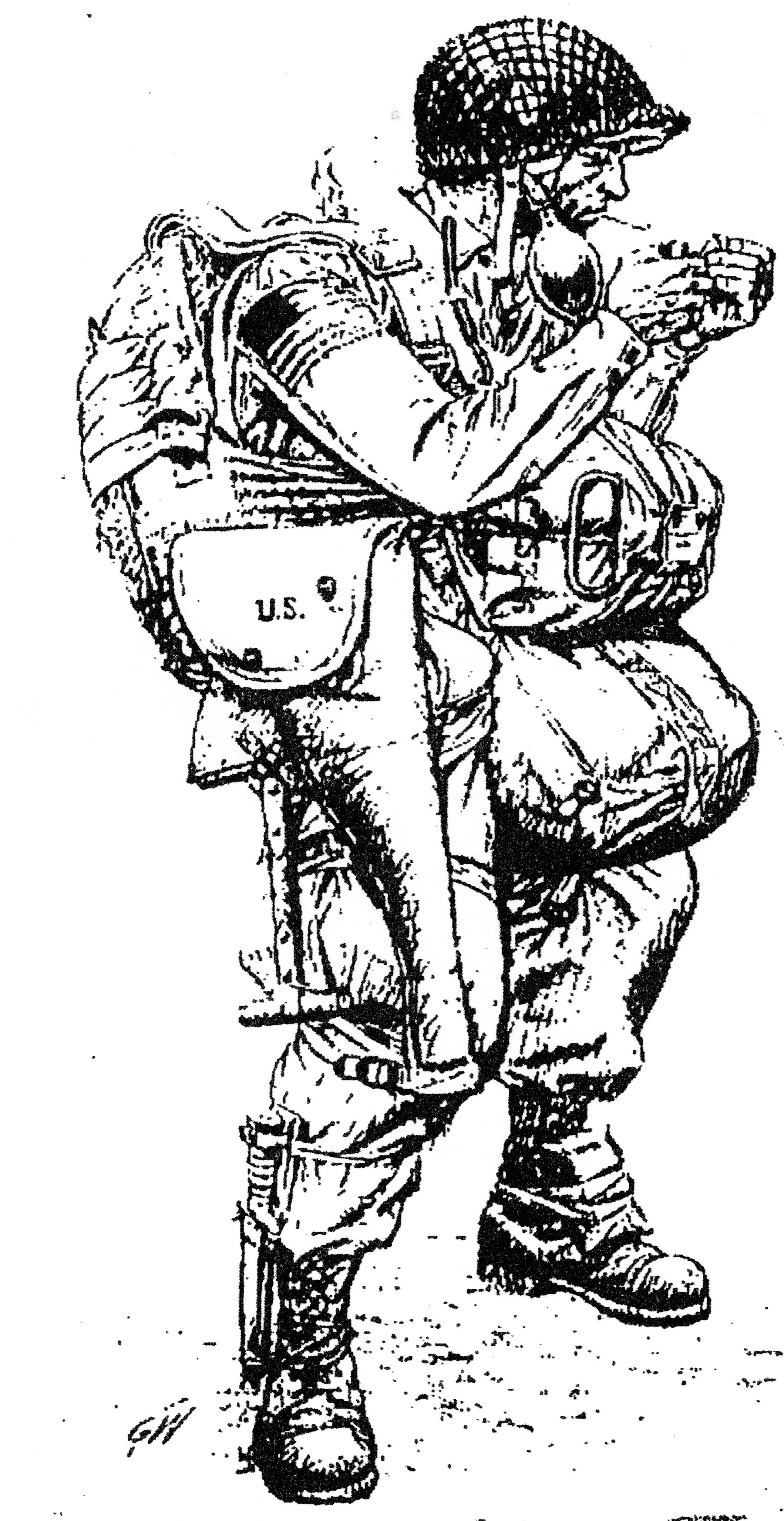
Photo of Col. Dillard at Arlington National Cemetery, taken by Eric Buchanan
The following is part of Col. Dillard’s response to the Center for Military History (CMH) regarding the Presidential Unit Citation. The response is contained in the 551st study at CMH. I had recently read, just prior to visiting CMH, an article regarding the type of resistance of the German military just prior to surrendering, how it was mainly made up of conscripted old men and young inexperienced soldiers; however, that wasn’t always the case as Col. Dillard points out in his rebuttal to CMH:
THE QUALITY OF THE OPPOSING 62nd VGD AT ROCHELINVAL.
“About the quality of the German forces who opposed the 551st during the Bulge counteroffensive, CMH is contradictory. At one point the study says the 551st “would meet heavy resistance from the line of departure to the objective”; at another it says “There is little indication that the Germans presented a spirited defense.” Which is it?
Furthermore, CMH confuses the issue by stating that “resistance in the 551st sector was based more on weapon power than fanatical infantry defenders.” Unfortunately, artillery and machine gun fire kill and maim as surely as infantry rifles. And a force need not be “fanatic” to be effective. CMH is no doubt correct when it notes the probability that “more of the battalion’s casualties were lost to artillery tree bursts than to infantry close combat.” But this does not mean that there wasn’t close combat (there was a lot of it), nor that the resistance wasn’t marked.
In fact, on January 4, Lt. Dick Durkee led a platoon of A Company in a rare bayonet attack on machine gun nests—64 Germans were killed by rifle butt strokes and stabbings. Combat doesn’t get closer than that.
Part of the problem in rating the quality of the 62nd Volksgrenadier Division, each of whose three regiments the 551st faced, is that it was stereotyped early as a “cannon Fodder” regiment by early historians and by Gen. Gavin, who stated in his memoir On To Berlin that “on the first day’s fighting, the 82nd completely overran the 62nd.” In fact, there were four more grueling days of combat against the 62nd for some of Gavin’s units—and none had it worse than the 551st.
Gen. Matthew Ridgeway—cognizant of the fierce onslaught the 62nd Volksgrenadiers were making (with the 18th VGD) at St. Vith—had a more accurate assessment. His Dec. 22, 1944, diary entry agreed that though their training wasn’t great, the 62nd VGD was still “good, dangerous.” Though hit hard in its first assault at St. Vith, it didn’t wilt, and on Dec. 26, the 62nd VGD, together with the 18th VGD, exacted the largest surrender of U.S. forces outside of Bataan—two regiments.
Moreover, the 62nd regimental unit that would face the 551st at Rochelinval, the 183rd, was the toughest and strongest of its three regiments. Exclaimed Gen. Kittel, the 62nd VGD commander, about St. Vith, “Our losses, above all on battalion and company commanders, were serious, but the losses sustained by the enemy in the 183rd sector were tremendous!” By CMH’s own figures, by the time of the American counteroffensive at the Bulge the 62nd VGD still had 82 percent of its manpower on the line. And—with grave consequences for the 551st—its artillery, including 85 light and medium guns, by CMH’s own accounting “was generally intact.”
If the 62nd were not presenting “a spirited defense, “why did they launch several counterattacks against the paratrooper’s advance?” (CMH own words). Two of these alone occurred deep into the 551st push on January 5—after a horrendous saturation of 88mm shells (Nebelwerfers) Germans attacked on foot in the snow. One 551st light machine gunner now up and fighting described it, “I remember seeing Germans all around us. They were in close and things got pretty wild. One of them got me on the chin with his rifle butt and knocked me out. I don’t know why he didn’t finish me off; maybe somebody shot him. We were fighting very hard then. It was kill or be killed.”
CMH is flatly wrong when it also states that “there is little indication that the Germans…with their backs to the river and few avenues of escape, that they intended to hold the ground overlooking the Salm if their southern flank was jeopardized.” A close examination of the Gen. Kittel debriefing after the war (which CMH puts in sources, but does not cite) shows Kittel made a key tactical decision January 6 because of “an infiltration by the enemy on either side of Quartiers [the 551st]” to shift the stronger, tougher 183rd from around Trois Ponts to Rochelinval. With Trois Ponts lost and Petit Halleux holding only “a weak bridgehead,” it was now evident Rochelinval was the only German chance in the area for safe retreat over the Salm. It also seems certain that Kittel shifted some if not all of the badly riddled 190th’s12 machine guns to further bolster Rochelinval. In short, there is every indication that German high command wanted Rochelinval held at all costs as a last evacuation point in a 20-mile sector of the Salm River. Thus it sent its best regiment of the 62nd there; that is who the 551st faced on January 7, 1945.
One last point on the make-up of the 62nd. Another document the CMH did not use which should have altered its assessment was a First Army special intelligence report on the 62nd published 6-7 January 1945 (Attachment #4). This interesting survey of 268 POWs shows only 12 percent were over 35, and only 1 percent 17 or younger. This evidenced “a surprisingly well-balanced age distribution” that was not heavily weighted, as the mythology went, toward old men and boys. Furthermore, the 62nd was far more experienced than commonly thought: 60 percent of the POWs had at least two years combat experience; rookies since Normandy numbered only 10 percent. Finally, the report notes that about the possibility that the war is lost to Germany, “a sizable number still indulges in wishful thinking.” Thus the 62nd as a whole were not yet of a mind to surrender en masse as the German Army did three months later. And it took six hard hours of fighting that last day at Rochelinval and a “storming of the barricades” hand-to-hand by the 551st before the 183rd men began to surrender.”


